Splits: run omnichannel experiments from the warehouse
Enable randomized, multivariate testing from the data warehouse across channels with our code-free tools.
Nate Wardwell
September 26, 2023
|5 minutes

Marketers constantly perform multivariate tests on everyday platforms like Facebook and HubSpot to improve their campaign performance. But what if you want to test treatments for an audience across different channels? For example, what if you wanted to test how effective it was to advertise to customers who abandoned an item in your e-commerce cart via Amazon Ads rather than Google Ad Manager?
Hightouch’s Splits feature makes it easy for marketers to define audiences and run randomized multivariate tests across any of the 200+ tools we sync data into. What was impossible before or depended on manual audience building in CSV files to upload to various platforms is now simple, seamless, and scalable. Splits helps marketers determine the best ways to reach their customers and rapidly optimize all campaigning.
Benefits of Testing From the Data Warehouse
The data warehouse stores all customer attributes, conversions, and other data, so it’s the best place to run and measure experiments.
Testing within marketing channels is a tried-and-true tactic to improve return on investment. Marketers are constantly iterating on campaign timing, email subject lines, advertising copy and creative, and much more. Platforms like Iterable offer user-friendly testing tools so marketers can continually test within them. By monitoring in-channel tests from the warehouse, marketers can uncover even greater insights by analyzing all metrics, including ones that specific marketing channel platforms may miss.
Testing between channels can be even more impactful than testing within them. What if it takes a marketer months to attain single-digit conversion improvements within an email platform when they could see a step-change improvement by instead retargeting customers through a paid media platform like TikTok?
While there are countless use cases for warehouse-driven testing, here are three sample strategies:
Optimize Advertising Spend
Paid media campaigns vary widely in cost and impact based on target audiences, messages, and more. Paid media managers constantly optimize return on ad spend (ROAS) by shifting dollars into their most efficient campaigns.
Paid media platforms like Google Ad Manager offer robust tooling to understand the efficiency of individual campaigns within the platform. With Hightouch’s Splits, marketers can just as easily test campaigns across different platforms to determine the best way to spend their advertising dollars holistically.
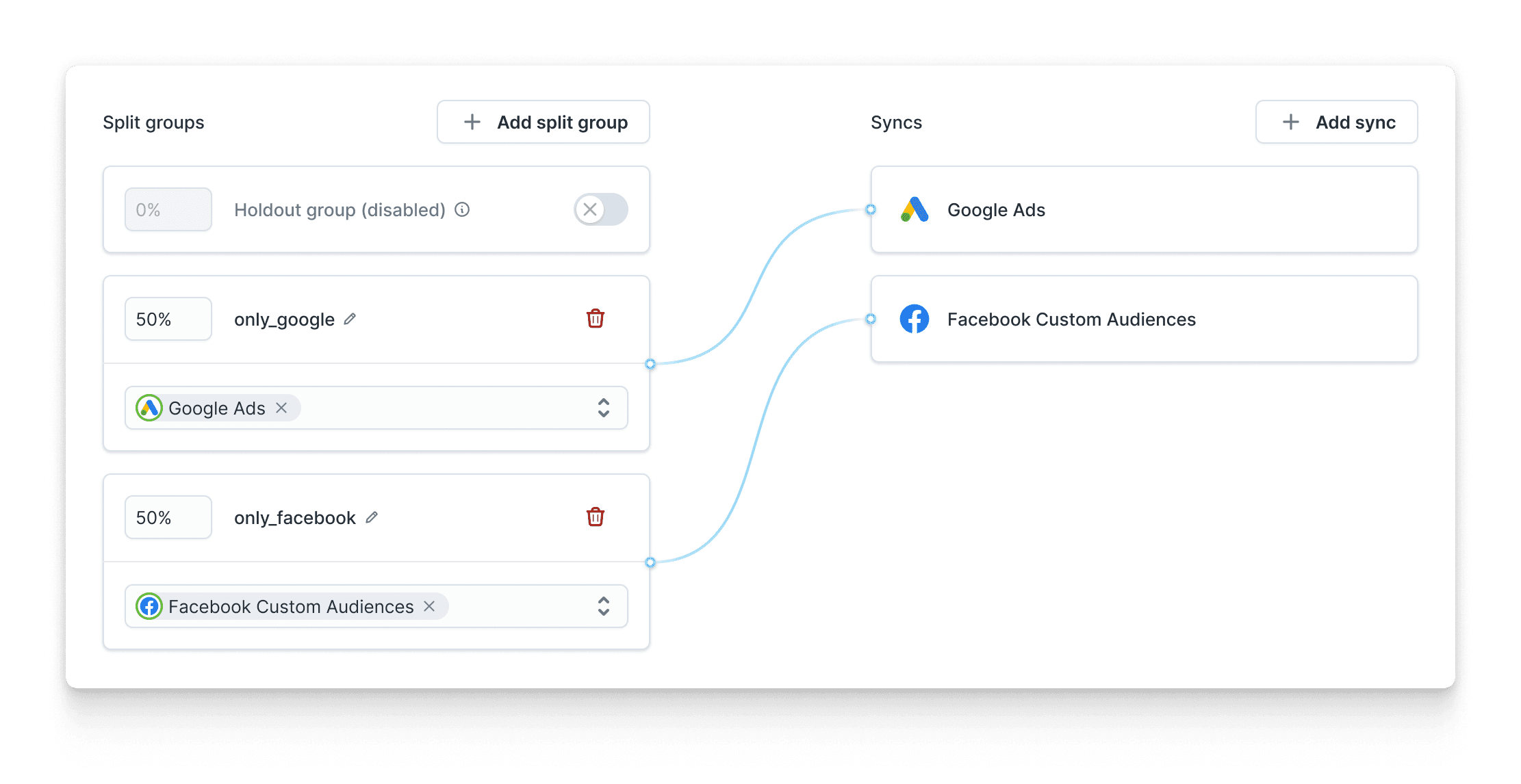
Determine Incrementality
Companies commonly run Google ad campaigns on their “brand” keywords to ensure prospective customers see their website at the top of search results rather than a competitor. These “brand campaigns” usually result in many last-touch-attributed conversions. Are these campaigns driving net new (incremental) sales? Or were these customers going to purchase anyway, and they just happened to click on the advertisement because it appeared before the company’s organic search results?
Incrementality testing allows companies to measure how effective it is to include customers in a campaign versus doing nothing at all. In this example, you’d sync a list of customers to Google Ad Manager to suppress from seeing brand campaigns. Your holdout group would be allowed to continue to see brand advertisements. Finally, Hightouch’s analytics features will show you whether more conversions came from the holdout or suppression groups, so you can tell if brand ad campaigns drive incremental sales.
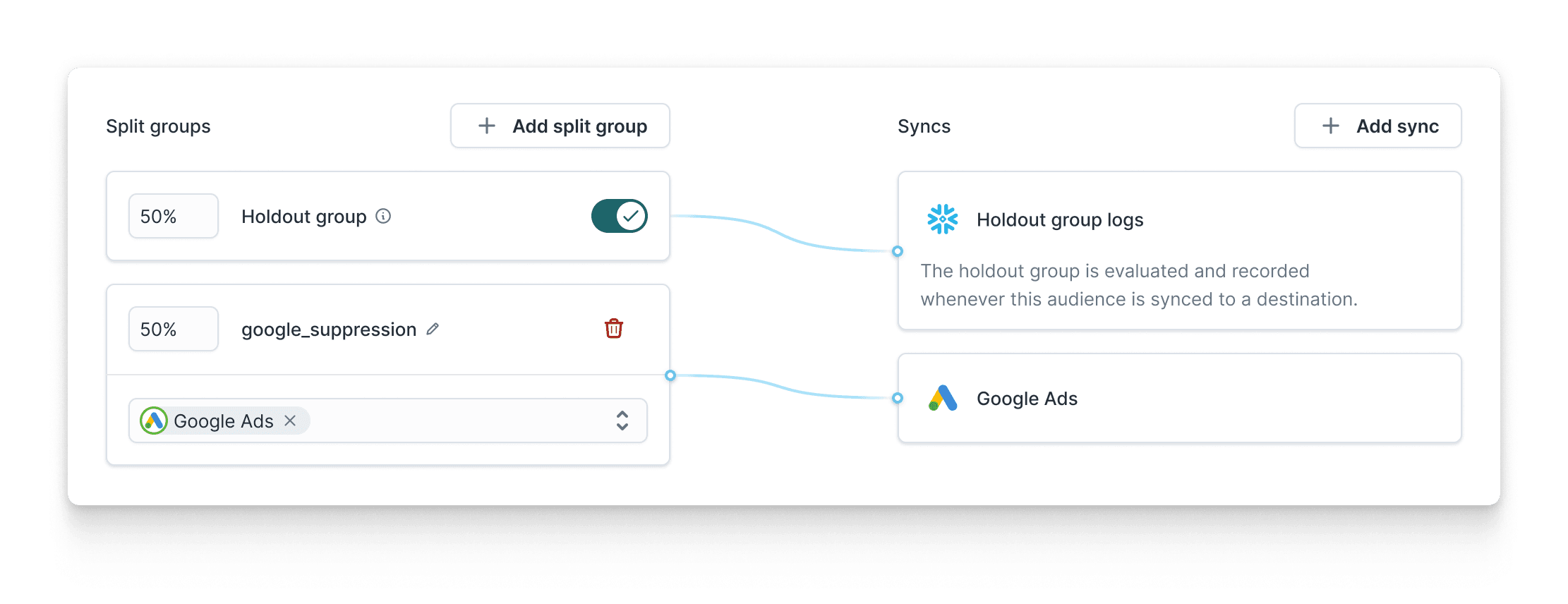
Test Full Impacts Within Channels
Most marketing platforms only capture a subset of customer data, and each may measure metrics slightly differently. Marketers can understand the full impact of their in-platform tests by triggering them and measuring them directly from the warehouse. This allows them to look holistically at conversions each test audience drove, including offline and other downstream conversions that marketing platforms might miss.
How Splits Works
Splits is part of Hightouch’s Customer Studio, which allows marketers to run campaigns from their data warehouse without writing code or needing technical expertise. All of the features in Customer Studio work together to support multivariate experimentation.
To begin any experiment, you must first define the customers you want to test. For example, to test the best way to message customers who left an item in their cart, you first need to define that customer cohort. This is simple to do with Customer Studio’s audience builder:
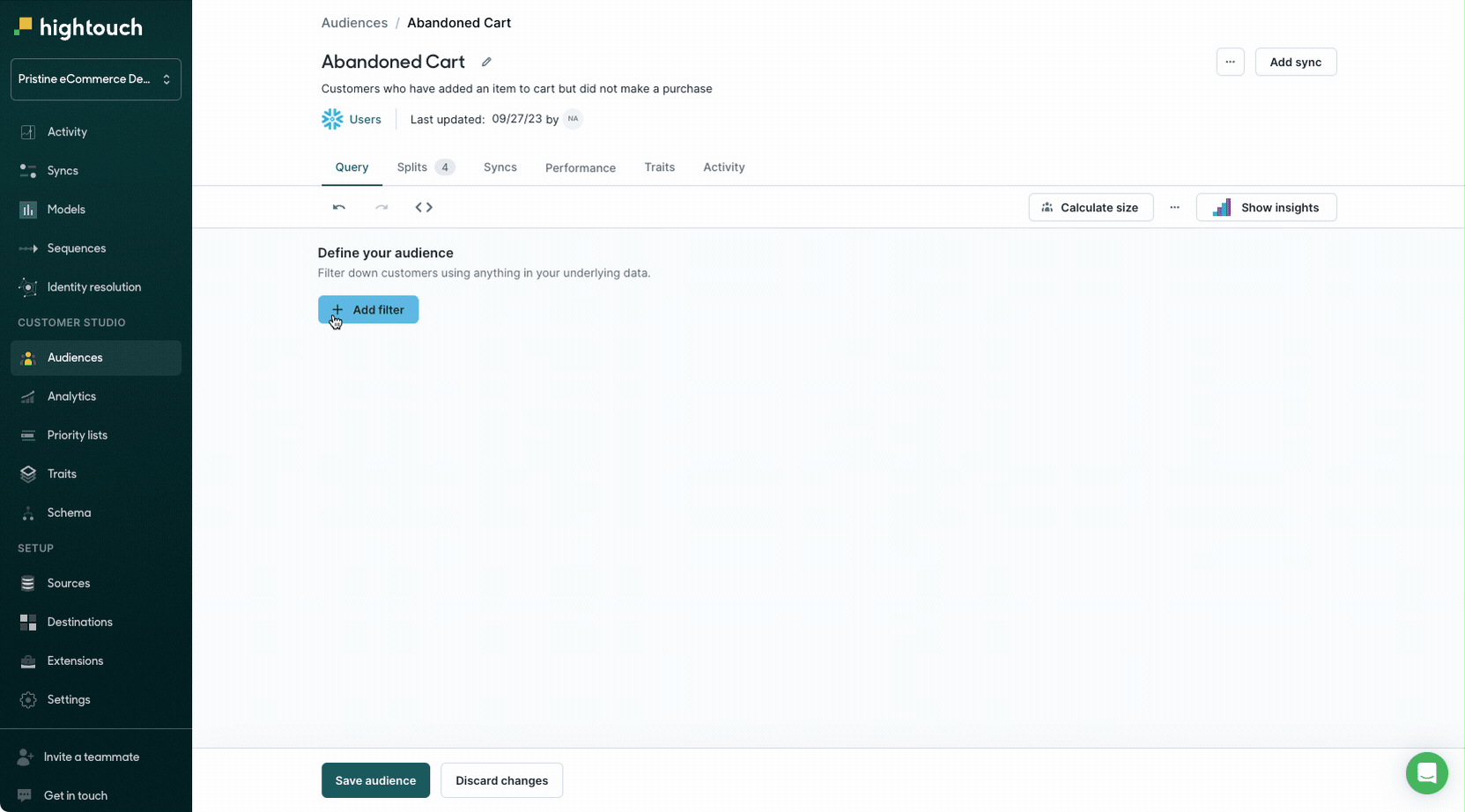
Then, you define the number of split groups to create within that audience and the percentage of users you’d like in each group. Hightouch will automatically randomize users between groups, but advanced features like stratification variables provide an additional layer of granularity so you can select customer attributes like age to spread evenly across your various splits. Finally, assigning which destination(s) you’d like each split group to sync to is easy.
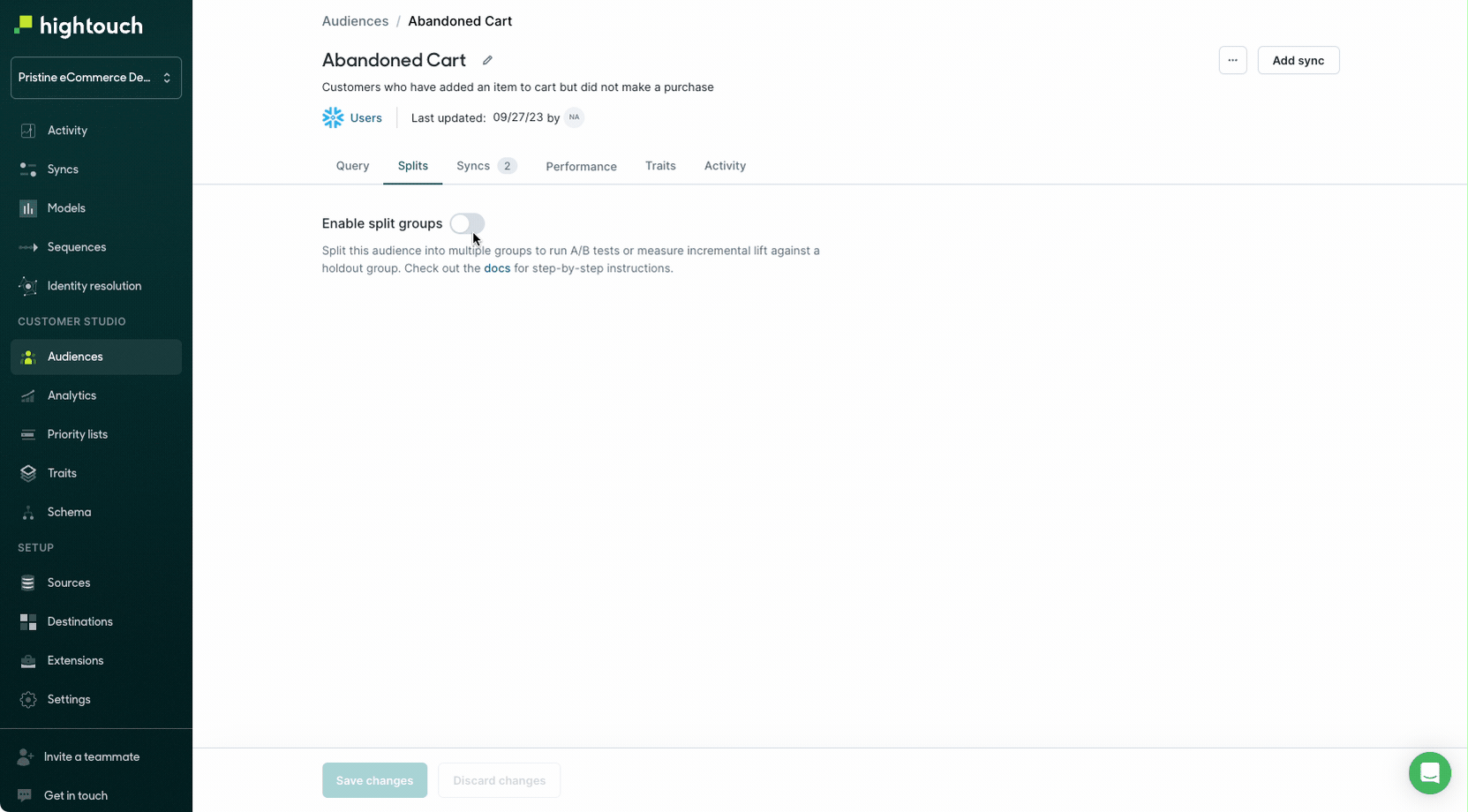
Once each campaign has run in downstream destinations, you can analyze the performance of the split test through your warehouse BI tools or directly in Hightouch.
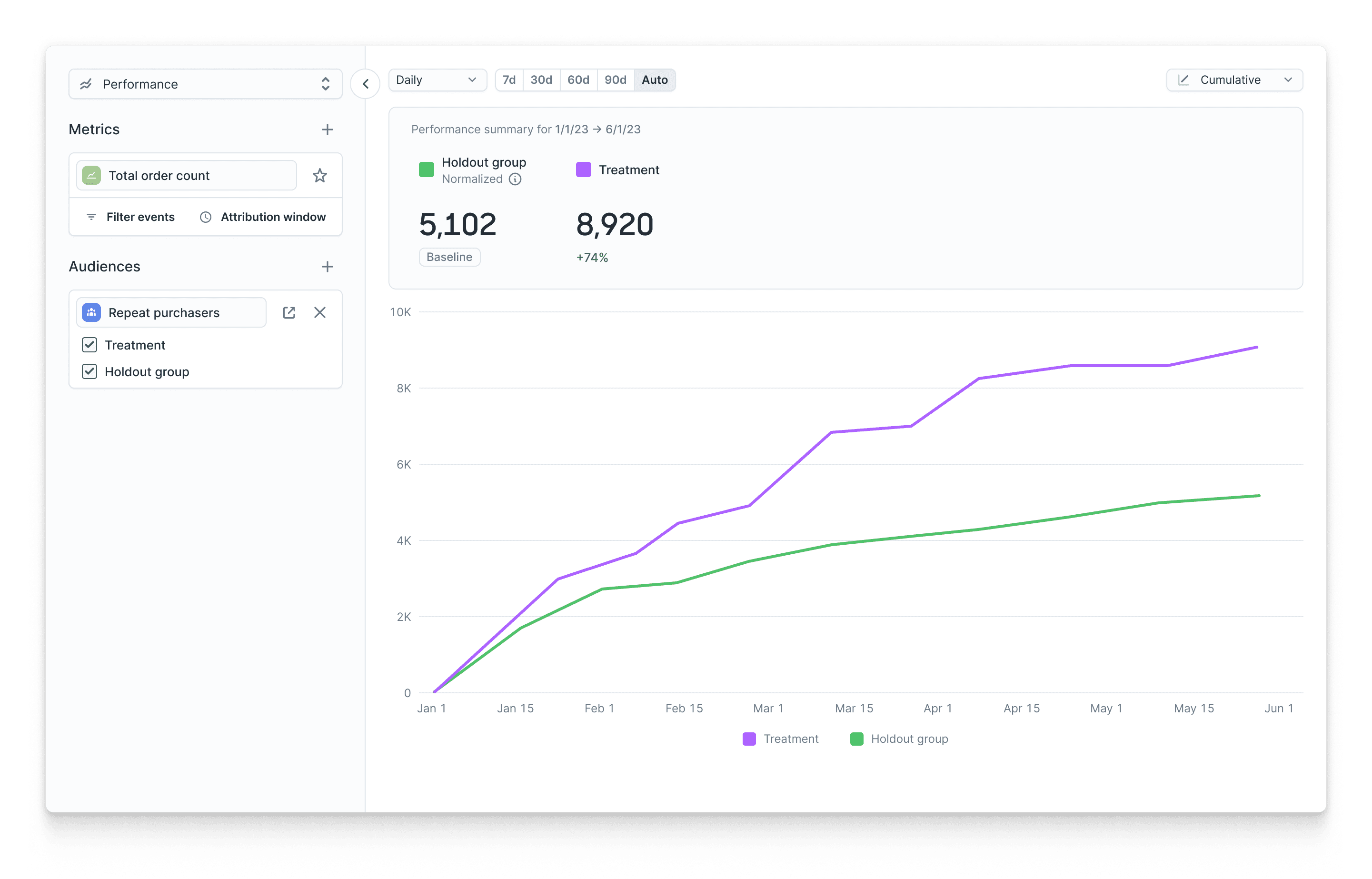
Thanks to Hightouch, managing complex multivariate testing across channels has never been easier.
Getting Started
It’s time to level up your campaigns and test performance across your channels. Splits is available for all Customer Studio users. If you want to see it in action or discuss your use cases, you can book a demo here.










